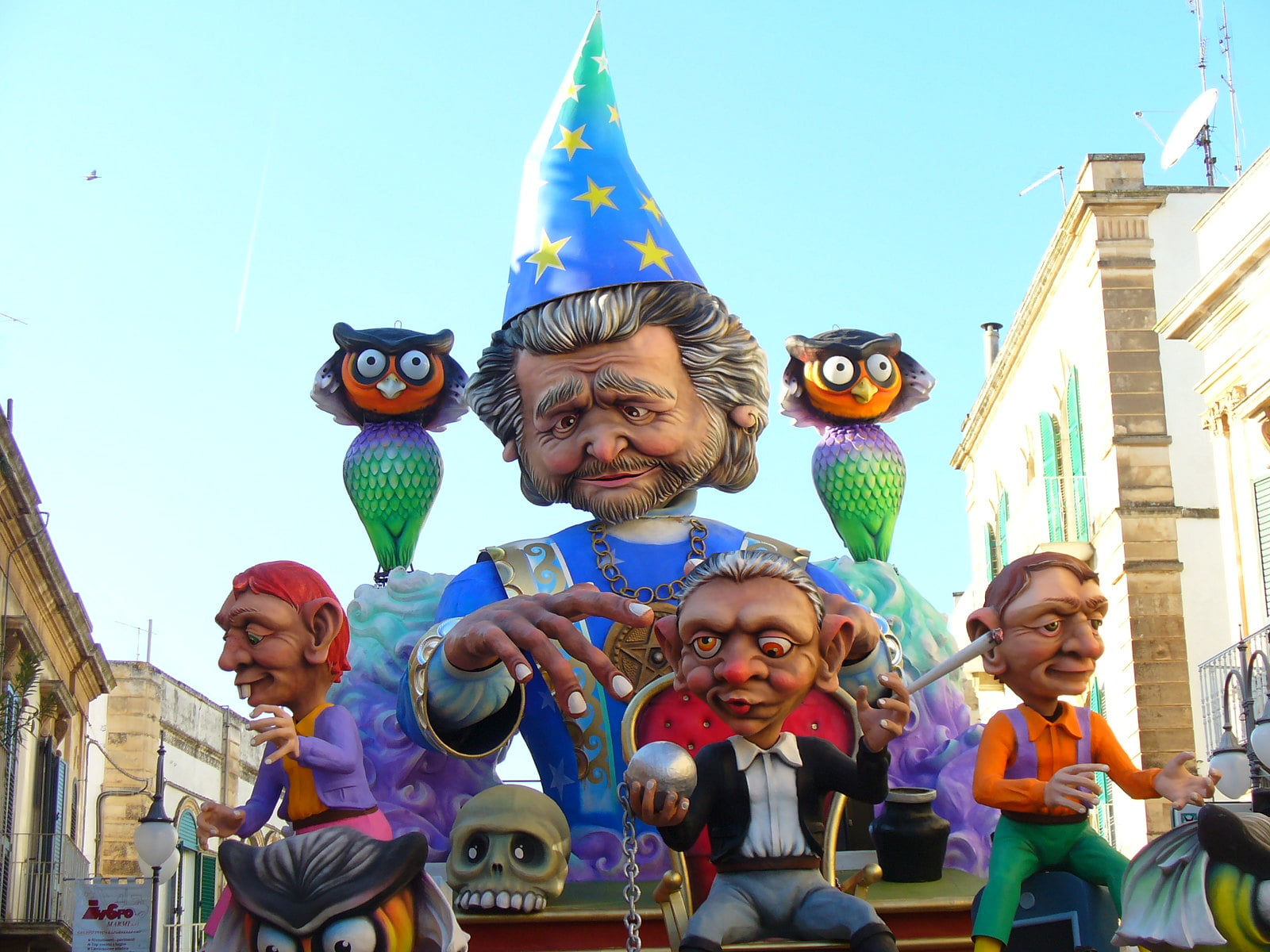The Putignano Carnival is the longest (from 26 December to Shrove Tuesday), and one of the oldest in Europe.
This year it stages its 626th edition with the theme “The Earth seen from the Carnival“: papier-mache masters, masks of character, artists and entertainment professionals, give life to a large and welcoming collective party, an expression of creativity and goliardia, satire and irony, culture and tradition.
With its program full of events and entertainment for all ages, the Carnival of Putignano is one of the flagships of the cultural events of Puglia. It is constantly renewed and has become one of the most important tools for promoting the tourist destination, thanks to its ability to attract international audiences. Here you can consult the complete program of the 626th edition.
The history of the Putignano Carnival
The Putignano Carnival dates back to 1394, when people still lived on crops and herding. The Apulian coasts were  subject to constant attacks by Saracen brigands and the fear gripped the Apulian citizens. At the time the governors were the Knights of Malta, a deeply religious order, who feared that the most precious relics of the territory could be stolen. They decided then to move them with a procession in the hinterland, towards Putignano.
subject to constant attacks by Saracen brigands and the fear gripped the Apulian citizens. At the time the governors were the Knights of Malta, a deeply religious order, who feared that the most precious relics of the territory could be stolen. They decided then to move them with a procession in the hinterland, towards Putignano.
Legend has it that at that time the inhabitants of Putignano were almost totally at work in the nearby countryside, but at the sight of the procession everyone abandoned their work to follow the sacred relics. It is 26 December 1394 when the relics are brought to the church of Santa Maria la Greca accompanied by a festive crowd, who followed the event with dancing and singing.
The carnival concept took over only in the mid-1900s, when small carts of puppets were replaced by more artistic and professional works such as real allegorical floats made for the occasion and deriving from months of craftsmanship.
An iron core and a paper body that attract all the people of the town and its surroundings for an occasion that amuses people of all ages and all classes, in short, a party for everyone.
Other historians argue instead that the true origin of the festival derives from a Christianization of the oldest rituals in honor of Dionysus, the Greek god of ecstasy and freedom of the senses.
The Carnival of Putignano to the present day
Today the Carnival is a reality of the town. From 26 December to Shrove Tuesday the streets of Putignano become a succession of processions and parties.


On Shrove Tuesday the 365 peals of the Maccheroni bell decree the beginning of Lent and the end of the celebrations for another year. On the eve of Shrove Tuesday a play gives the extreme unction at the Carnival, now running out, which will have its funeral on the last day, with a procession where a papier-mâché cart with a pig will be set on fire , as symbol of the end of the carnival and beginning of lent.
Colors and wonders of the Putignano Carnival
During each carnival, the protagonists are the allegorical floats, result of the art of papier-mâché cultivated in Putignano since the 1950s. The fruit of months work of the papier-mache masters, ruthless in their satire and wonderful in their charm, they are the heart of the celebrations.
